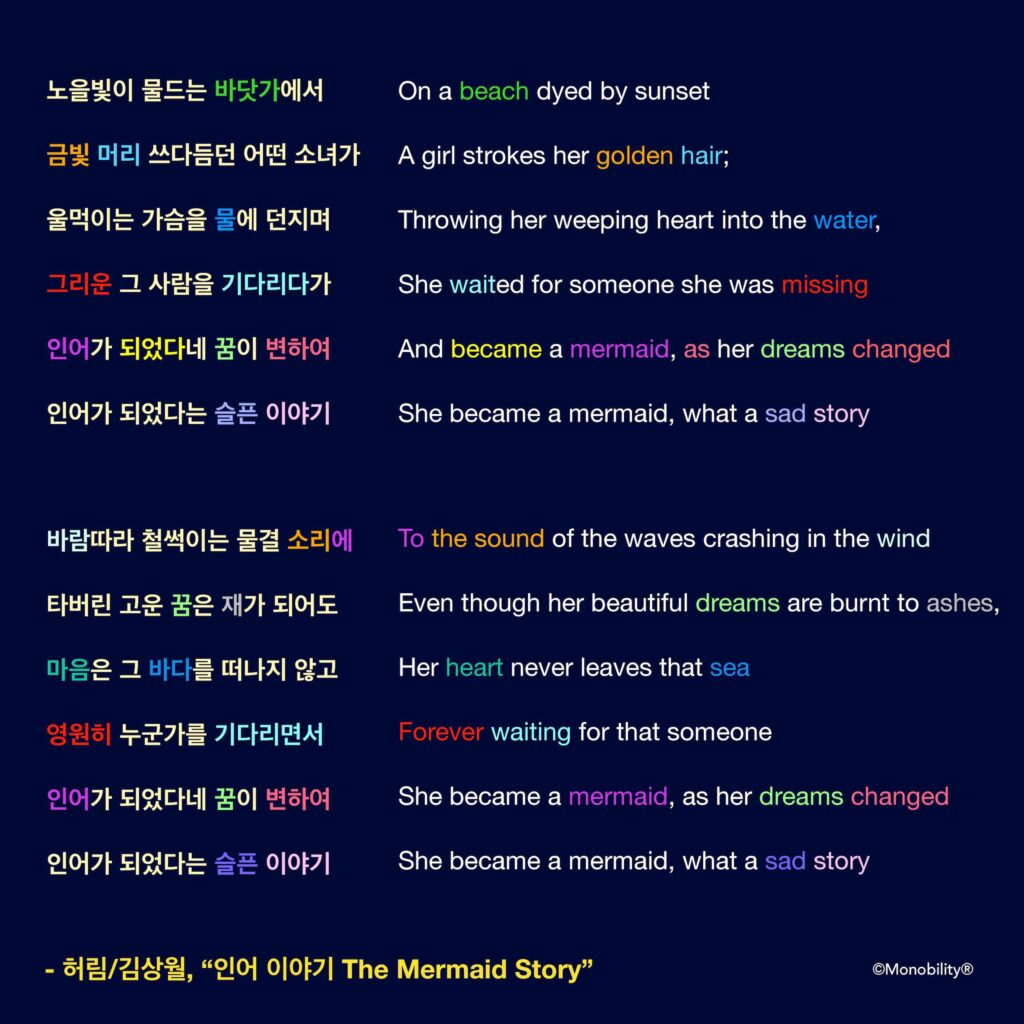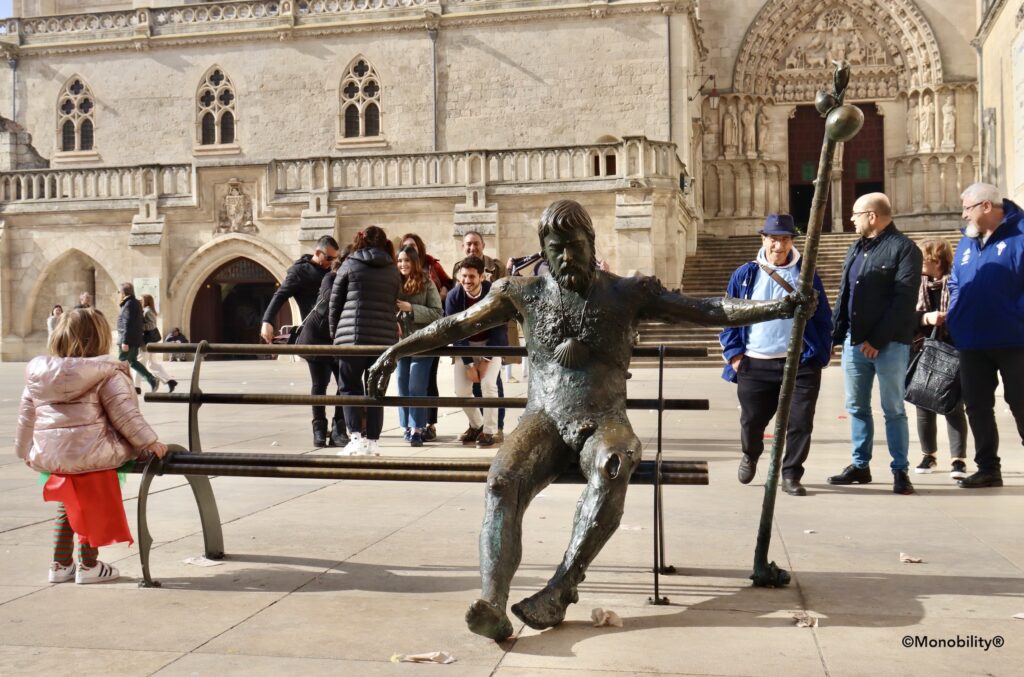인어
mermaid
sirène
sirena
sirena
sereia
Meerjungfrau
syrena
mořská panna
undinė
русалка
This one is simple. When a syllable that begins with a vowel (denoted as the null “ㅇ”) follows a syllable that ends with a consonant at its ‘batchim’ position, that consonant is pronounced as the initial sound of the second syllable. This phonetic phenomenon is called “연음 법칙” which translates best as “Linking.” Somewhat similar to the French “liaisons,” only a bit simpler.
So, 인어 sounds like [이너], not distinctly as [인] [어]. Just as 언어 (language) sounds as [어너]. As a matter of fact, this simple phonetic rule is the number 1 reason why Korean often sounds good to the ear, even musical and mellifluous. For example, in the first part of the famous song 인어 이야기, I could find as many as seven words where this “linking” occurs:
- 노을빛이 color of sunset + subject marker => sounds as [노을비치]
- 울먹이는 weeping, about to cry => sounds as [울머기는]
- 가슴을 heart + object marker => sounds as [가스믈]
- 물에 to the water => sounds as [무레]
- 그 사람을 the person (someone) + object marker => sounds as [그 사라믈]
- 꿈이 dream + subject marker => sounds as [꾸미]
- 슬픈 이야기 sad story => sound as [슬프니야기] when spoken very quickly.
Can you find more such examples of 연음 법칙 (Linking) in the rest of the lyrics?




